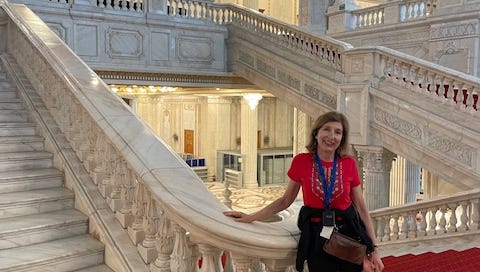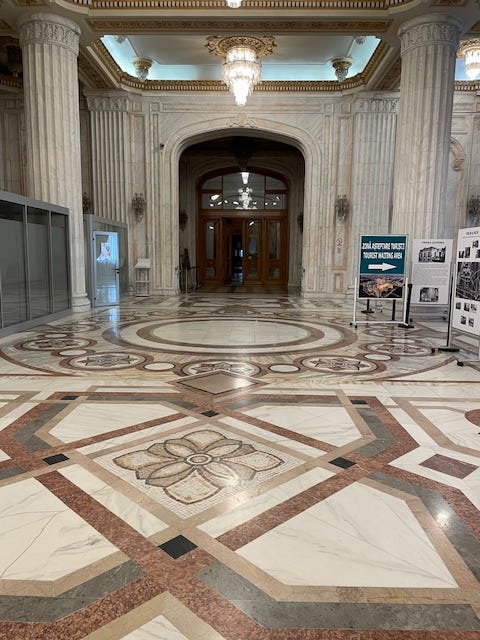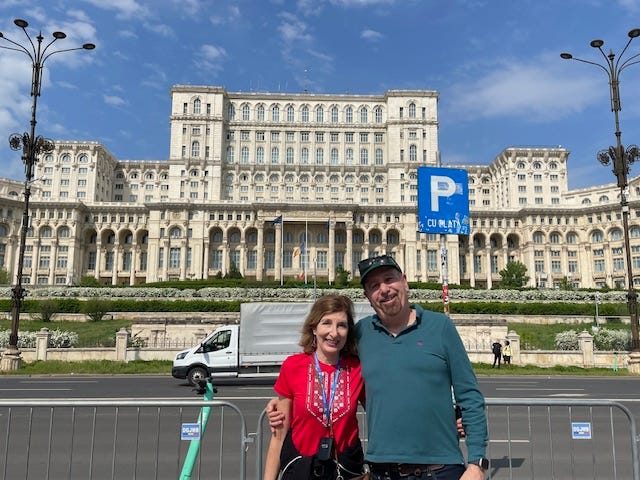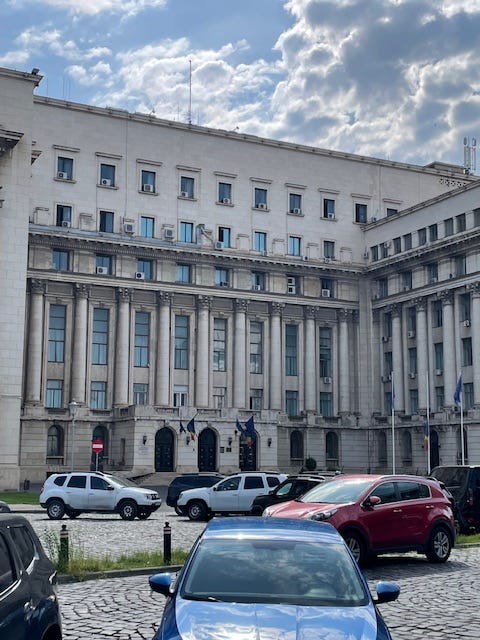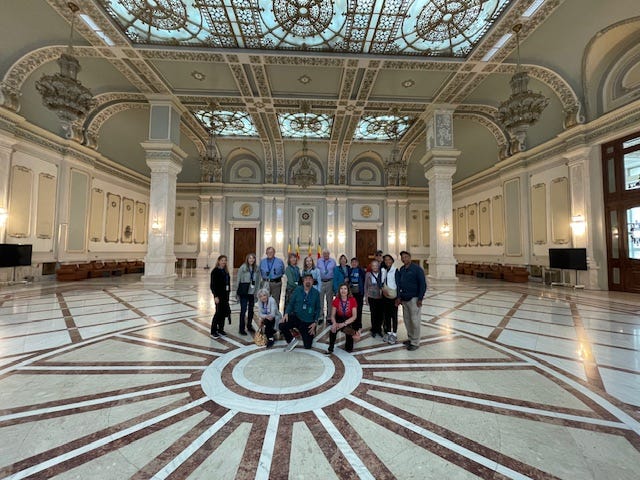Parliament Palace in Bucharest Inspires Reflection on Giants and Fairy Tales
Plus a WRITING PROMPT
In my tour through the massive rooms and corridors of the Palace of Parliament in Bucharest, Romania, I felt as if I was walking around the abode of a giant.
It would have been easy to get lost if I didn’t have a guide. You must book your tickets in advance and bring your passport or national ID.
The second largest government building in the world, second only to the Pentagon, the word that most aptly describes it is colossal. Maybe this was what Jack felt like, in the story “Jack and the Beanstalk,” I thought to myself. Only in this instance, the man attempting to be seen as a giant, was former Romanian leader Nicolae Ceaușescu.
Ceaușescu, like many authoritarian dictators, was preoccupied with making himself and his regime appear powerful and prosperous. The Palace of Parliament embodies that mindset.
Earlier that morning, in Bucharest, we’d visited “Revolution Square” where I saw the balcony where President Ceaușescu delivered his final speech before the 1989 revolution, that had been brewing in a number of Eastern European nations, broke out in Romania. A few days later, after a summary trial, he and his wife Elena were executed.
Now I was visiting one of his most grandiose projects.
March 4, 1977, a 7.4 magnitude earthquake claimed the lives of approximately 1500 residents of Bucharest. Ceausescu, unmoved by the suffering of those who’d lost family and property, saw the devastation as an opportunity.
Rather than attempt to restore what was lost, he opted to replace many of the 18th and 19th century Neoclassical, Art Nouveau and Art Deco style buildings with Soviet style utilitarian structures. The quickly constructed tenements would be more than suitable for the workers, he reasoned.
For himself and his cronies, the leaders of the communist regime, he wanted to build impressive office buildings. The crown jewel of the group he named the House of the Republic to embody the triumph of socialism.
It was to be Europe’s largest building at that time. Over 10,000 houses were destroyed, forcing many families from their homes, to make room for what was planned to be the largest building in Europe. Designed by architect Anca Petrescu, assisted by a team of hundreds of architects, the design process was long. The President and his wife kept changing their minds as to what they wanted. Perhaps this is why the building was never completed.
Construction began in 1984 and continued after the revolution, when Romanian transitioned to a parliamentary democratic republic. The building remains unfinished. Neoclassical in general style, the aim was to use only materials from Romania. The one exception are the doors of Nicolae Balcescu Hall. The two doors are made from mahogany, a valuable gift sent to Ceausescu by his friend, the African dictator Mobutu Sese Seko, at that time President of the Republic of Zaire.
The 3,552,087 square ft. building has more than 3000 rooms. It has twelve floors and eight underground levels, the last of which is an atomic bunker. Due to its massive proportions and weight, the building sinks by 6mm each year .
So little of the building is used, you can rent a room or two of the Romanian Parliament building for a very reasonable price, according to our tour guide. But few people in Bucharest know the venue is available.
An incredible waste of resources, the Palace of the Parliament, which was renamed after the 1989 revolution the “People’s House” or “People’s Palace” (“Casa Poporului”) is the definition of a white elephant. There are so many chandeliers, the building’s fixtures contain more than 100,000 light bulbs, they do not light them all. This is what happens when a megalomaniac dictator makes unchecked decisions.
Nicolae Ceaușescu served as President of Romania, commencing in 1984 but began his leadership career serving as the General Secretary of the Romanian Communist Party from 1965 until his execution in 1989. He also served as Head of the State from 1967-1989 in addition to being the President of the Romanian State Council.
An authoritarian dictator, who amassed great personal wealth and lived in opulent surroundings while many of his citizens starved; he is remembered for enforcing strict censorship of the press, human rights abuses and police brutality, Acording to historians, he had no remorse for his actions and considered his stewardship of Romania a great success.
Folk tales and fairy tales that include ogres and giants, often are an attempt to make sense of what one sees as unfairness in the world. Write your own fairy tale inspired by your life.
Have you gone on a quest? Witnessed an injustice? Does a hero come to the rescue, or maybe your protagonist becomes the hero. You decide. Have fun. Keep observing. Keep Writing.
Thank you for reading. You can sign up to follow me for FREE and if you enjoyed this post and want to support my writing, consider purchasing my little chapbook filled with short essays and poems.
Thanks again.
Nadja Maril

